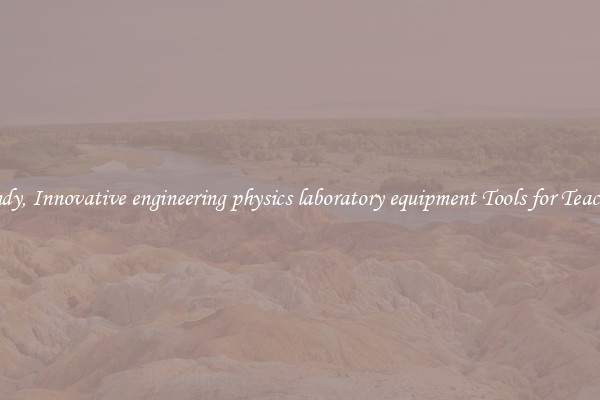Handy, Innovative engineering physics laboratory equipment Tools for Teaching
Handy, Innovative Engineering Physics Laboratory Equipment Tools for Teaching

The field of engineering physics requires students to have a strong understanding of both engineering principles and the laws of physics. A hands-on approach to learning is essential in this field, as students need to apply their knowledge to real-world problems. To facilitate this, engineering physics laboratory equipment has been developed to provide students with the necessary tools for experimentation and learning.
One of the most innovative pieces of equipment used in engineering physics laboratories is the Vernier caliper. This handy tool is used to accurately measure the dimensions of objects. With its precise measuring capabilities, students can gain a better understanding of concepts such as length, diameter, and thickness. The Vernier caliper is easy to use and provides accurate readings, making it an invaluable tool for engineering physics students.
Another essential tool in the engineering physics laboratory is the oscilloscope. This equipment allows students to visualize electrical signals, enabling them to analyze and understand various waveforms. By connecting the oscilloscope to different circuits, students can observe how changes in voltage and current affect the overall waveform. This hands-on approach enhances their comprehension of electrical engineering concepts, such as signal processing and circuit analysis.
Moreover, the Bunsen burner is a classic and indispensable tool for engineering physics laboratories. It is used for a wide range of experiments involving heat transfer, combustion, and chemical reactions. By adjusting the flame and observing its characteristics, students can study heat conduction, convection, and radiative heat transfer. The Bunsen burner is versatile and easy to use, allowing students to conduct various experiments to explore fundamental concepts in thermodynamics and heat transfer.
In recent years, 3D printers have also become popular in engineering physics laboratories. This innovative tool allows students to bring their designs to life and explore concepts related to prototyping, manufacturing, and material science. By creating three-dimensional models, students can visualize complex structures and analyze their mechanical properties. This technology revolutionizes the way students approach problem-solving and product development, making it an essential tool for engineering physics education.
In conclusion, engineering physics laboratory equipment plays a crucial role in facilitating hands-on learning and experimentation. Tools such as the Vernier caliper, oscilloscope, Bunsen burner, and 3D printer provide students with the necessary resources to understand and apply engineering principles and physics laws. By utilizing these innovative tools, students can enhance their conceptual understanding and develop practical skills essential for the field of engineering physics.

View details

View details

View details

View details








